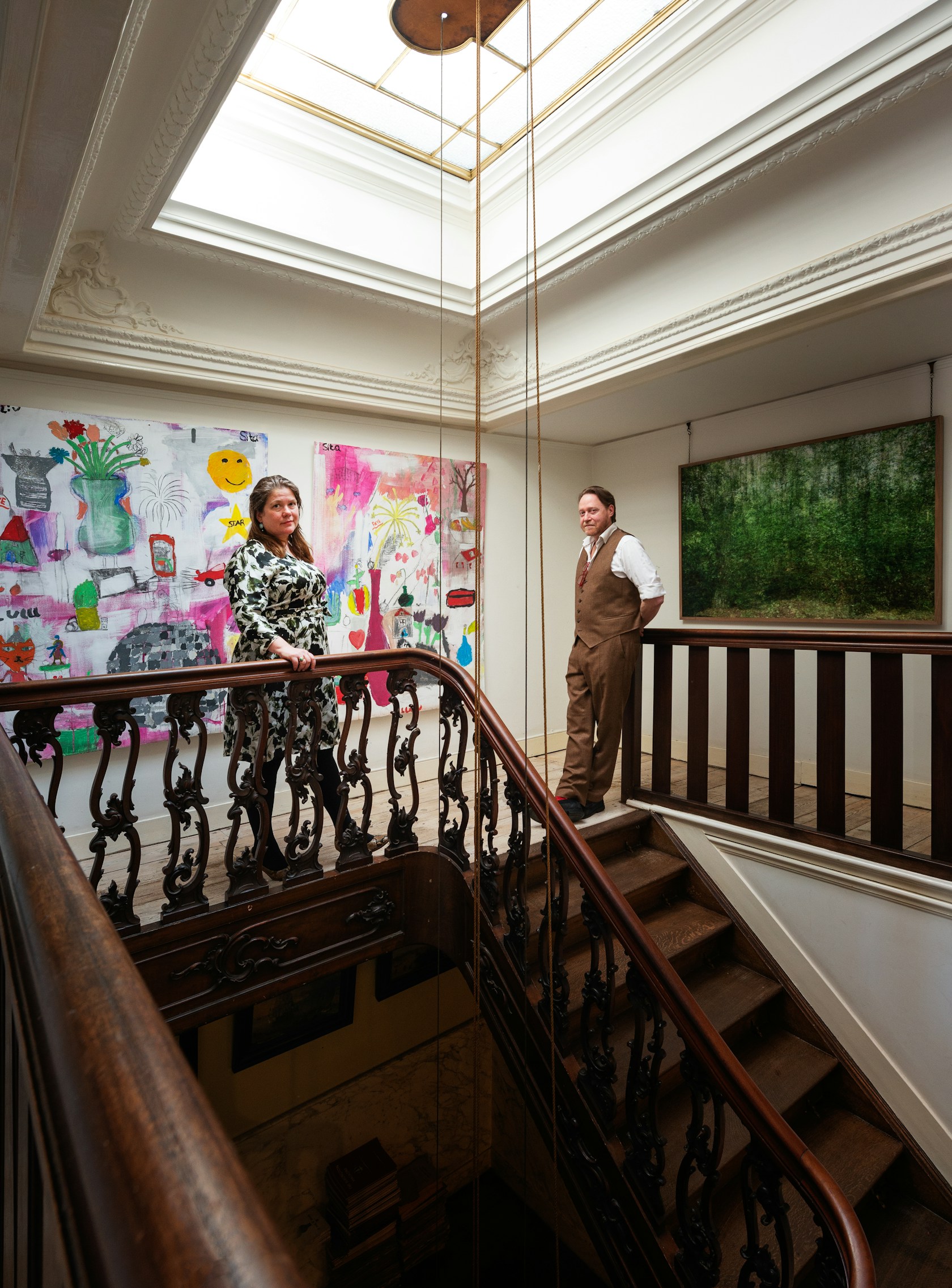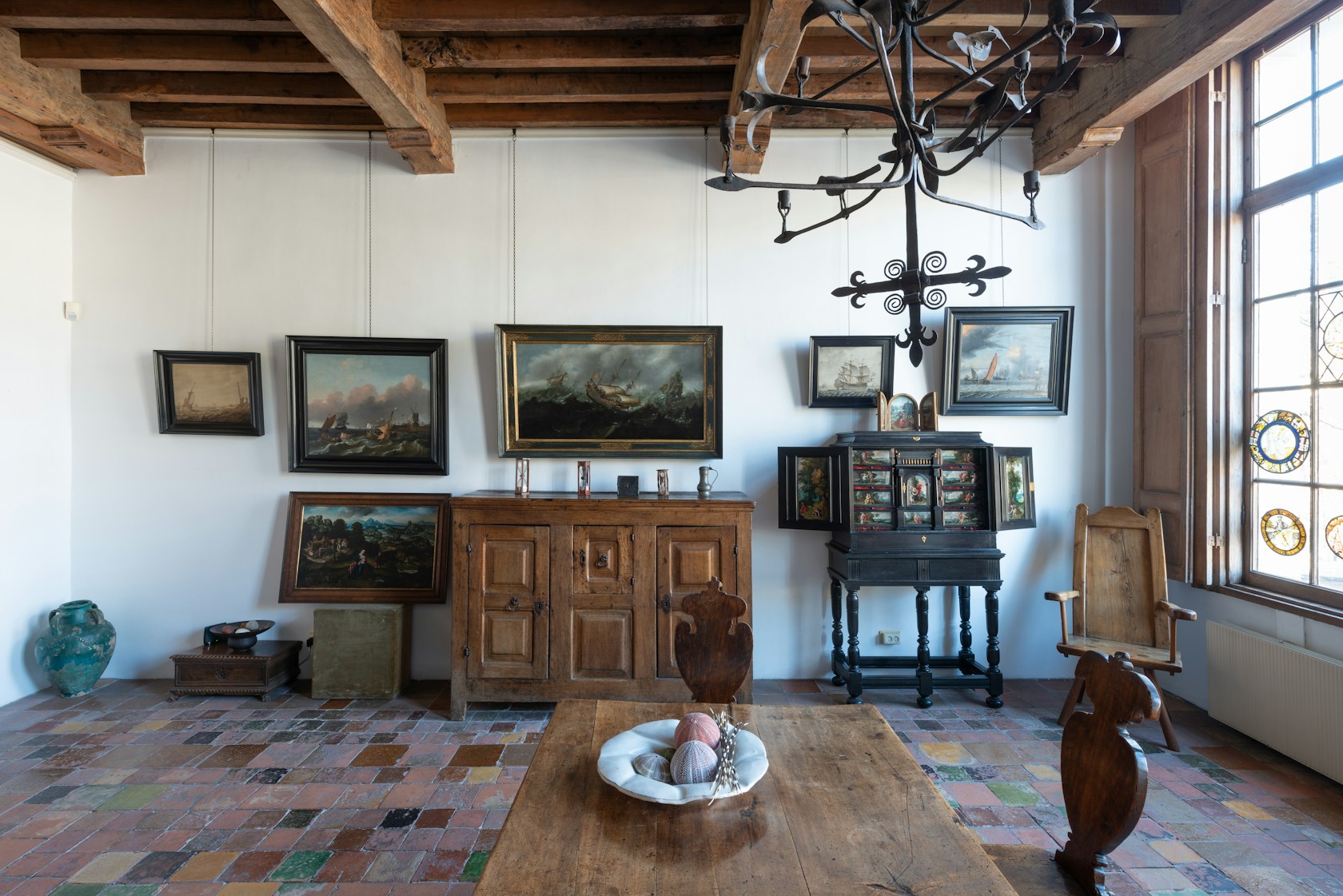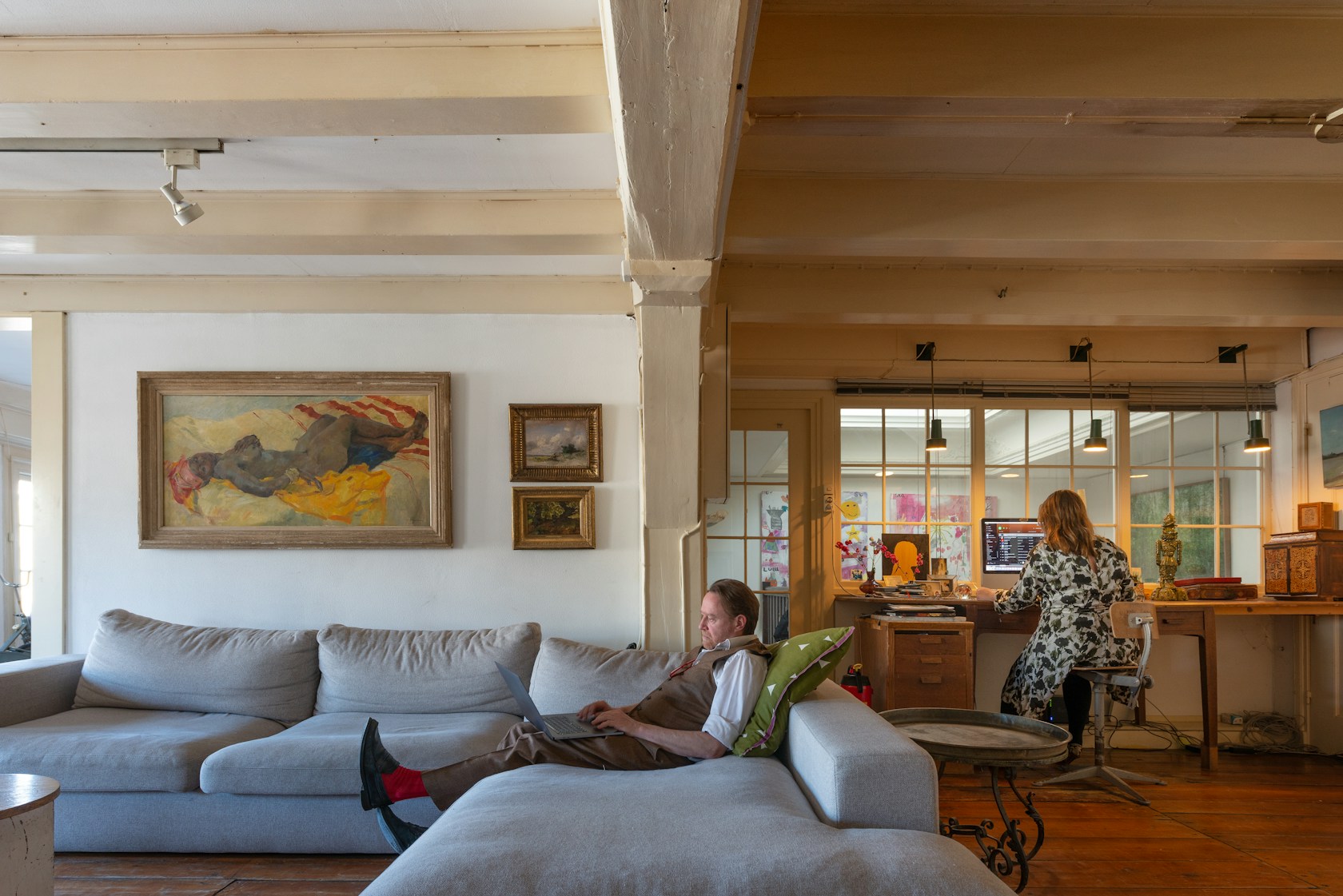
Inside Art Dealer Niels de Boer's 17th-Century House on Amsterdam's Historic Canal
Step into the Old Master dealer's art-filled gallery, foundation, and private family home
- By Cheyenne Wehren
- Living With Art
Niels de Boer, director of Kunsthandel P. de Boer, is a third-generation art dealer whose family-run business has been active for almost a century. The gallery was founded by De Boer’s great-uncle in 1922; his great-uncle, grandfather, and father have always dealt in Old Master paintings, which remain the core of the business to this day. The gallery and the art foundation created by De Boer’s great-uncle, P. & N. De Boer Foundation, are situated in a late-17th-century canal house on the Herengracht, one of the historic canals of Amsterdam. De Boer lives on the top floor of the building with his girlfriend Jacky, their daughter Liv, and his collection of art. Here, he invites TEFAF in and reminisces about growing up in an art-dealing family, how he started to collect, and which objects are particularly special to him.

The building itself comes with a history rooted in art as well. “It was built for a nephew of the famous art patron and mayor of Amsterdam Jan Six I, Pieter Six, who had an impressive collection of Italian and French Old Masters,” explains De Boer. “My great-uncle bought the house just before the war and had it refurbished. He incorporated the remains of a 16th-century house from Edam into the second floor, creating a period room to show his collection of Early Dutch, Flemish, German, and Italian works of art.” The combination of the foundation’s collection, his small personal collection, and the gallery stock in a historic setting is something De Boer likes. “It’s tempting to see it as one big fluent collection, although the works from the foundation and my collection are not for sale.”
De Boer recollects starting to collect as a young child when he focused on a specific popular brand: “As a kid—like many others—I started to collect shells, minerals, fossils, football cards, and anything related to Ajax, the Amsterdam-based football club. My first real collection consisted of Coca-Cola items. My father was very much against my sister and me drinking the soft drink, which did not keep me from buying cans and bottles for my collection. I drank all of them and refilled the bottles with black coffee. Later on, a lot of people gave me related items, and the collection grew. Much of it is still stored in my parents’ house.” His first artwork came later. “When I was about 16 years old. It was a drawing of butterflies by Pieter Holsteyn I, but I don’t have it anymore. I would not call myself a real collector, although I think I would be a good one if I could afford it.”


“I think all art dealers are collectors." — Niels de Boer
Growing up in the family business impacted De Boer’s love for and preferences in art. At the age of 16, he temporarily dropped out of school to work for his parents at the gallery—De Boer's mother was also part of the family-business as a restorer. Until then, he was not very much interested in Old Master paintings, preferring artists such as Andy Warhol and Salvador Dalí instead. After working at the gallery for half a year, he learned much about Old Masters and grew to appreciate them more. De Boer finished school and started studying art history at the University of Amsterdam, but stopped his studies after a year and a half to turn to the gallery on and off. “Around 1993, I decided to start working for the gallery full time. Paintings have always surrounded me, and that is what I love most.”
De Boer lives with his girlfriend Jacky and their 16-year-old daughter, who both appreciate art. Jacky organizes an exhibition once a year, focusing on a few contemporary artists, to which De Boer adds Old Master paintings. “We both like the combination of old and new. We enjoy showing contemporary art outside of the white cube in 18th-century rooms. Together we visit art fairs and see more contemporary than classic art, but she certainly likes older works of art as well.” His daughter Liv brings a love for graffiti and street art to the family, Banksy being her favorite. “They both have an influence on what we hang on our walls.”
Over the years, De Boer has collected a couple of objects that are very special to him. One of them is a painting by Dutch painter Jacob Dooyewaard, which hangs prominently in the family living room. “Dooyewaard […] was a friend of my grandparents. It is a North African nude, and I have seen this painting all my life in their house. After their death, the painting went to one of my aunts who had it for almost 15 years until I bought it from her,” De Boer reminisces. In addition, the foundation has several drawings and two paintings by Hendrick Goltzius, a Dutch Mannerist artist he particularly likes. “One drawing is very special to me because it is an outstanding and personal example of his skills. Drawn with a silverpoint on prepared parchment, it depicts a young boy, probably one of the sons of the artist Dirk de Vries, who Goltzius visited twice in Venice in the 1590s. On the back of the drawing is a tiny sketch of a woman’s face that shows the influence of Leonardo da Vinci, probably copied from a painting or drawing that Goltzius saw in Italy.” One of the oldest natural history objects in his collection is an armadillo prepared by the renowned Parisian firm Deyrolle in the early 1900s. “My parents found this in Paris and bought it for me,” shares De Boer.

How does he approach his own collection as an art dealer? “Buying for my own collection is not that far apart from what I do professionally. At a certain point, I took up a fascination with the Wunderkammer, the display of wonders of nature and humankind. I used the Wunderkammer concept at fairs and in our gallery, combining paintings, drawings, and objects. I used objects that we have in the house or borrowed them from antique dealers. I sincerely love precious Renaissance objects like bronzes, scientific instruments, and other Wunderkammer objects, but I could not afford them,” says De Boer. “What I could afford, however, were natural history objects, and that’s what I bought over the years. I also love trompe l’oeil paintings—paintings that fool your eye—and collect them. We always have quite a large number of them in stock as well, and I used them for my stand at TEFAF Maastricht 2018.” Even though his personal collection and professional work are related, “it is difficult to collect exactly the same as your clients as you don’t want to compete with them,” De Boer says. However, he sees collecting and dealing as related experiences: “I think all art dealers are collectors. When you buy for the gallery’s stock, you collect; unless you buy for specific clients, then you act more as an agent.”

"Buy with your heart, buy what you like, and enjoy it." — Niels de Boer


When asked what living with art means to him, De Boer states that he feels so privileged to live with art daily. “It’s hard to imagine a life without it. Seeing more and more art online, viewing or holding a great work of art is a real treat. With that in mind, I feel very lucky to be able to look at paintings or drawings from our foundation and even hang them in my living room. Quite often, when I have acquired a painting for the gallery, I hang it on our living room walls before taking it to a restorer.” The foundation’s collection has even made it possible for De Boer to get to know a member of his family better: “It is not my collection but was formed by my great-uncle, who I did not know. Through his paintings and drawings, I got to know his taste very well.”
And what advice would he give new collectors? “Buy with your heart, buy what you like, and enjoy it. It’s sad to see how much art is kept in storage.”





